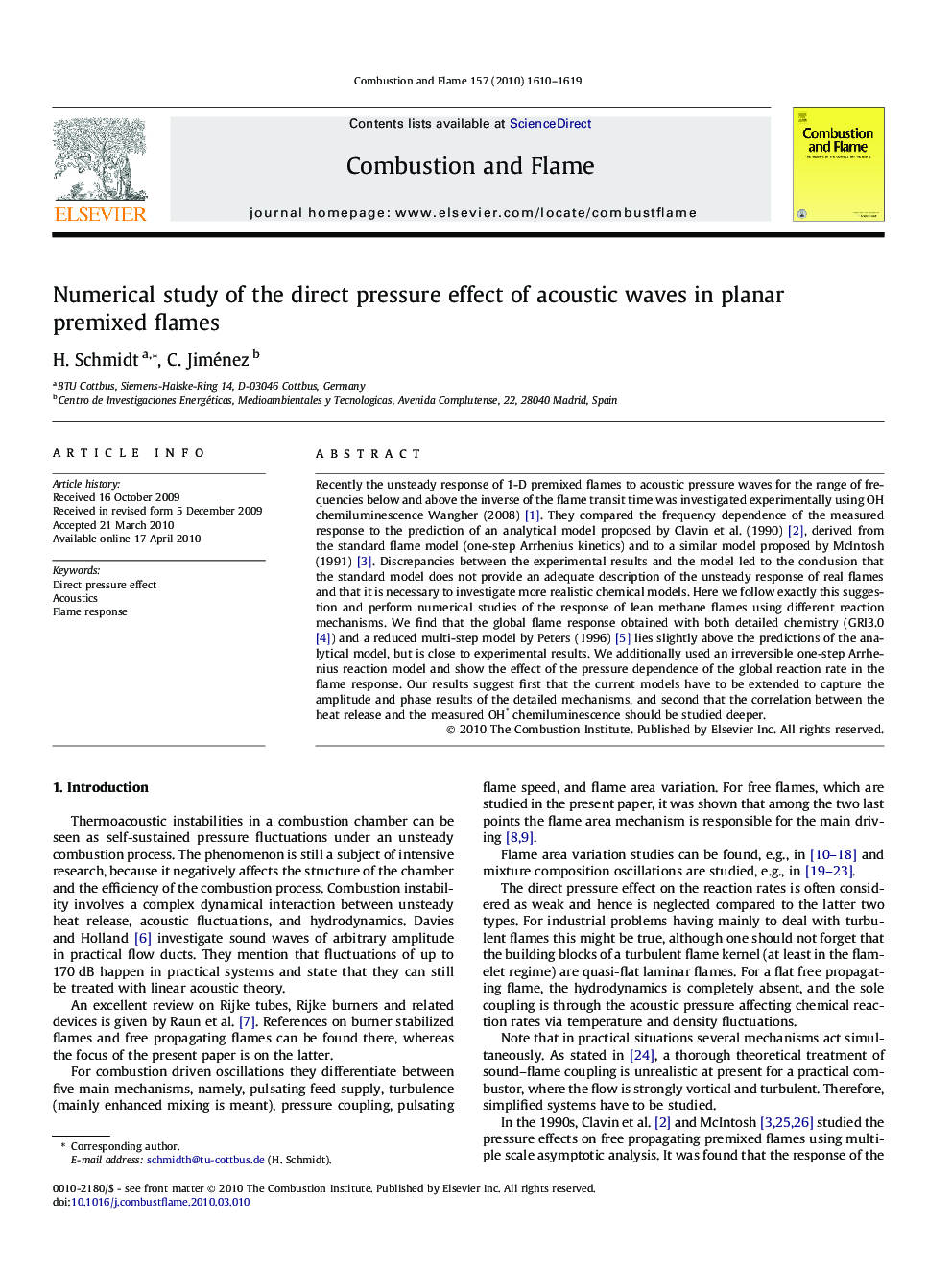| Article ID | Journal | Published Year | Pages | File Type |
|---|---|---|---|---|
| 166709 | Combustion and Flame | 2010 | 10 Pages |
Recently the unsteady response of 1-D premixed flames to acoustic pressure waves for the range of frequencies below and above the inverse of the flame transit time was investigated experimentally using OH chemiluminescence Wangher (2008) [1]. They compared the frequency dependence of the measured response to the prediction of an analytical model proposed by Clavin et al. (1990) [2], derived from the standard flame model (one-step Arrhenius kinetics) and to a similar model proposed by McIntosh (1991) [3]. Discrepancies between the experimental results and the model led to the conclusion that the standard model does not provide an adequate description of the unsteady response of real flames and that it is necessary to investigate more realistic chemical models. Here we follow exactly this suggestion and perform numerical studies of the response of lean methane flames using different reaction mechanisms. We find that the global flame response obtained with both detailed chemistry (GRI3.0 [4]) and a reduced multi-step model by Peters (1996) [5] lies slightly above the predictions of the analytical model, but is close to experimental results. We additionally used an irreversible one-step Arrhenius reaction model and show the effect of the pressure dependence of the global reaction rate in the flame response. Our results suggest first that the current models have to be extended to capture the amplitude and phase results of the detailed mechanisms, and second that the correlation between the heat release and the measured OH∗ chemiluminescence should be studied deeper.
